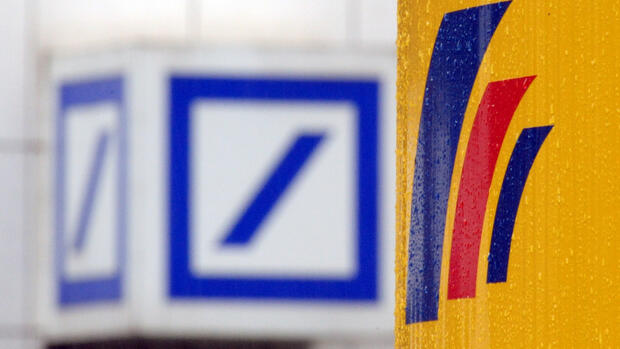The new head of private customers at Deutsche Bank, Claudio de Sanctis, is streamlining the structures of his division. Many managerial jobs will be eliminated as a result.
(Photo: dpa)
Frankfurt The new head of private customers at Deutsche Bank, Claudio de Sanctis, wants to control his division more centrally than before. The previously separate business units for German and international private customer business will be merged from July 20th. “In the future, the private customer bank will have a single global management team,” says an internal statement from de Sanctis, which is available to the Handelsblatt.
So far, the private customer division has had three management committees: one was located directly under the previous board member Karl von Rohr, and there was one for German business and one for international business.
The new structure has several consequences.
1. Numerous management positions will be eliminated
The new structure makes many management positions superfluous: tasks such as product development, organization and control will be in one hand in the future. There will be “significantly fewer” managing directors in the future, people familiar with the matter told the Handelsblatt. Top and middle management positions would probably fall by more than a third, but by less than half, it said.
The reduction in management bodies alone makes many management positions superfluous: The only remaining “Executive Committee” under Claudio de Sanctis will in future consist of around 20 people. So far there have been 42 people spread over all three bodies.
The new board of directors for private customers manages with significantly fewer executives.
(Photo: Deutsche Bank)
The uniform structure also puts an end to a lot of double work. According to insiders, this applies above all to tasks in the areas of product development, control and day-to-day operations.
The introduction of the new structure is subject to co-determination. The bank wants to start talks with the employee representatives in August and hopes that the talks will be concluded by the end of September at the latest.
2. Increase in power for the Germany boss
The merger gives Germany boss Lars Stoy more influence. In addition to normal private customer business, he will also be responsible for wealth management in Germany, i.e. business with particularly wealthy customers. Previously, all wealth management was assigned to the international private client business, which was previously managed by de Sanctis.
Stoy will be responsible for two important market areas in the future: the bank will differentiate between wealth management and private banking on the one hand and personal banking on the other.
In the area of wealth management and private banking, the institute bundles the rich and the wealthier customers who have an increased need for advice. The institute understands personal banking to be bulk business with customers who essentially use classic account functions.
Stoy is also the only member of the division in the group management committee of the bank, along with private customer director de Sanctis. This is the most important governing body of the bank below the Management Board.
3. Bank rearranges private customers
The new structure also provides information on how the bank intends to organize its private customer business in Germany: In the case of high-end customers, Stoy is to “bring the business with rich customers (wealth management) and more affluent customers (private banking) “closer together”, according to the Communication. Cooperation with the business bank is also to be strengthened.
In mass business, the bank wants, among other things, to “digitize its customer channels and processes”. The institute is still looking for a head for this area, which will report to Lars Stoy.
In financial circles it is said that there is a search both internally and externally. With a view to the digitization needs of the division, it is obvious that digitization expertise plays an important role in filling this position.
It is still unclear where the boundary between normal and upscale customers should be. The bank wants to make a decision by the end of September at the latest, says a person familiar with the talks. The limit will probably be in the low six-digit range for customer assets.
More: Flagship branches, new structures: This is how Deutsche Bank’s new head of private customers ticks
